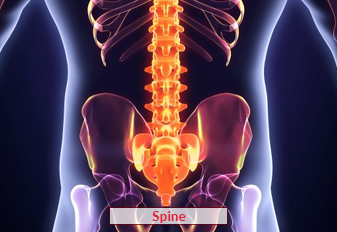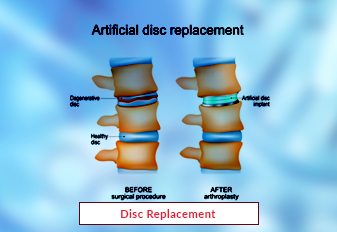Spine Surgery

Spine surgery is a surgical procedure that involves the correction of spine-related disorders or injuries. It is performed by a qualified and experienced spine surgeon and may involve the removal of damaged or diseased tissue, fusion of vertebrae, or implantation of medical devices. The surgery may be performed through a minimally invasive approach or an open approach, depending on the severity of the condition and the location of the problem. Spine surgery can help relieve pain, improve mobility, and prevent further damage to the spine.
Book an AppointmentAbout Spine Surgery
India is a popular destination for spine surgery due to the availability of world-class hospitals, experienced spine surgeons, and affordable costs. There are several types of spine surgery, including discectomy, laminectomy, spinal fusion, and artificial disc replacement. Your spine surgeon will determine which technique is best for you based on your specific needs and goals.
The cost of spine surgery in India can vary depending on the type and extent of the surgery, the surgeon's experience and reputation, and the location of the clinic or hospital. However, in general, spine surgery in India is significantly more affordable than in many other countries.
Following spine surgery, patients will need to follow the surgeon's aftercare instructions carefully, including taking any prescribed medications, attending follow-up appointments, and participating in rehabilitation if necessary.
Procedure of Spine Surgery
The spine surgery procedure can vary depending on the type and extent of the surgery, but here is a general overview of the steps involved:
Anesthesia: The patient will be given general anesthesia, which means they will be asleep and pain-free during the surgery.
Incision: The surgeon will make an incision in the skin to access the spine. The incision may be small and minimally invasive or larger and more invasive, depending on the type of surgery being performed.
Removal of tissue or bone: The surgeon will remove any damaged or diseased tissue or bone that is causing pressure on the nerves or spinal cord.
Fusion or stabilization: In some cases, the surgeon may need to fuse two or more vertebrae together or stabilize the spine using rods, screws, or other medical devices.
Closure: The surgeon will close the incision with sutures or staples and cover it with a dressing.
Recovery: After the surgery, the patient will be monitored in the hospital for a period of time to ensure that there are no complications. The patient will be given pain medication and may need to stay in the hospital for several days. Physical therapy may also be recommended to help the patient regain strength and mobility in the spine.
Patients can expect some swelling, bruising, and discomfort in the area around the incision after the surgery, which can be managed with pain medication and rest. It's important to follow the surgeon's aftercare instructions carefully to ensure a safe and successful recovery.
Require Assistance?
Get A Quick Callback From Our Healthcare Experts
Other Specilities We Cover

Scoliosis Spine Surgery

Spine Tumor Surgery




